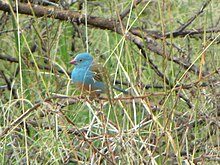By
Victoria Gill
Science
reporter, BBC News
About
100,000 wetland birds are killed every year from poisoning by discarded lead
ammunition, say scientists.
The
report also suggests that the consumption of game shot with lead ammunition has
a greater impact on human health than previously thought.
Scientists
involved in the research say the evidence now supports a ban on the use of lead
ammunition in the UK.
The
report is a collection of research presented by experts who gathered at the
Oxford Symposium on Lead ammunition last year. It includes findings from
studies carried out by university academics and by conservation groups
including the Wildfowl and Wetlands Trust (WWT) and the RSPB.
As
well as the impacts of lead on the environment, researchers have investigated
the effects on human health of consuming game containing traces of lead
ammunition.
Lord
Krebs, emeritus professor of zoology at the University of Oxford, and former
chair of the UK Food Standards Agency, told BBC News that there was "an
overwhelming body of evidence" that lead used in hunting was "a risk
both to humans and to wildlife".
"On
that basis," he told BBC News. "The advice would be that lead shot
should be phased out."

